NGC 1535 – Cleopatra’s Eye
The brightest planetary nebula in the meandering winter (at least for me!) constellation of Eridanus the River is NGC 1535. Structurally, it is similar to NGC 2392, the Eskimo Nebula in Gemini having a bright inner and fainter outer shell. That represents two distinct eruptive periods. It is bright at 10.5 magnitude and fairly small at 18″ but looks greenish in a large telescope. The 11.6 mag. central star is pretty easy to see. Coordinates: 4h 14m – 12o 44′



NGC 2346 – Butterfly Nebula
East of Orion is the faint constellation of Monoceros, the unicorn. The Milky Way flows through it, bringing a lot of deep sky objects. I observed NGC 2346 in April rather than the dead of winter when clear nights equate to cold temps. This is an unusual bipolar nebula is fairly large at 55″ across. The Uranometria Deep Sky Field Guide lists it at 11.8 magnitude. Wikipedia gives 9.6 – quite a bit brighter! (I’ll stick with the former…) The central star is about 11.2 magnitude, fairly easy to see in modest telescopes. My sketch is with a 16″ at Taylorsville Lake State Park – a place I’ve don’t most of my observing in recent years. Coordinates: 7h 9m -0o 48′


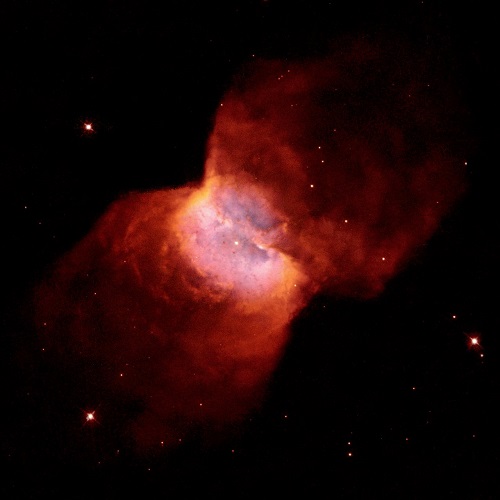
NGC2371-2 Stargate Atlantis Puddle Jumper Nebula
I realize this has to rate was one of the most bizarre names for a nebula, ever. But the photos resemble the spacecraft in that Sci-Fi show. This object has two NGC designations because early observations showed it as two objects rather than one with two bright portions. Imagine the Dumbbell Nebula split by a gap.
Located in Gemini, it’s well-placed for winter and spring observers at 7h 25.5m +29o 30′. The nebula is faint at 13th magnitude. The central star is two magnitudes brighter at 11.3. It is large at ~55″ in diameter. It’s about 4,400 light years away.
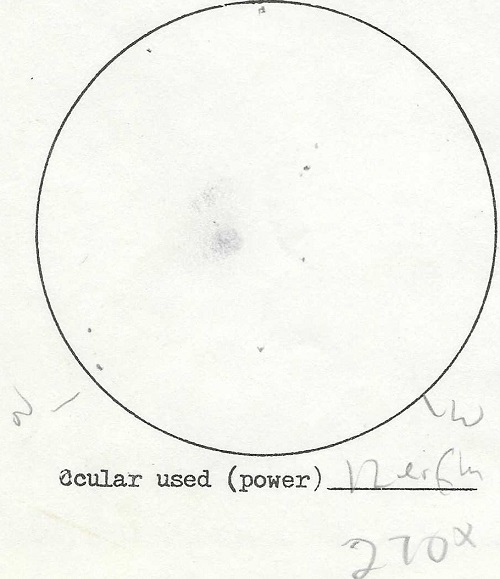

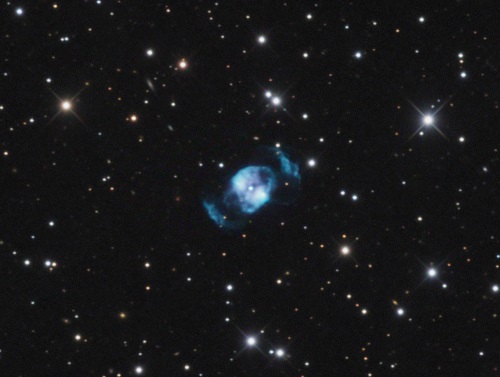
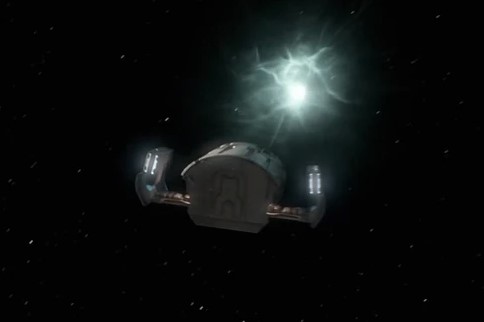
NGC3132 Southern Ring Nebula
Ring-shaped planetary nebulae are common across the sky. Big bright ones are sought because they are great objects to introduce to non-observers. These celestial “smoke rings” are often bright green due to doubly ionized oxygen atoms in the gas cloud.
It’s a good size nebula 30″ in diameter, and bright at 9.7 magnitude. However, it is low for mid-latitudes in the U.S. – RA 10h. 7m. -40o 21′. My observation was from the Winter Star Party in the Florida Keys, where it was well-placed for observing.
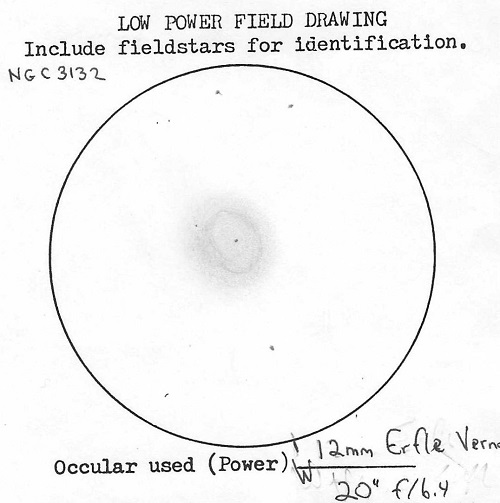
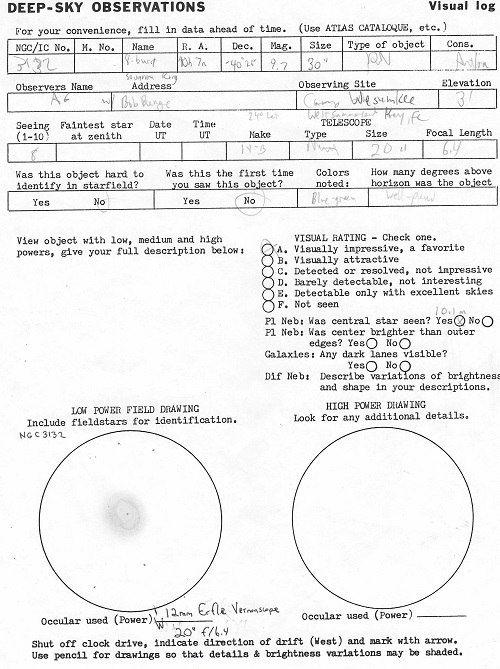

NGC4631
This large nebula lies in the southern constellation of Corvus the Crow. It’s a pretty easy object with modest telescopes.

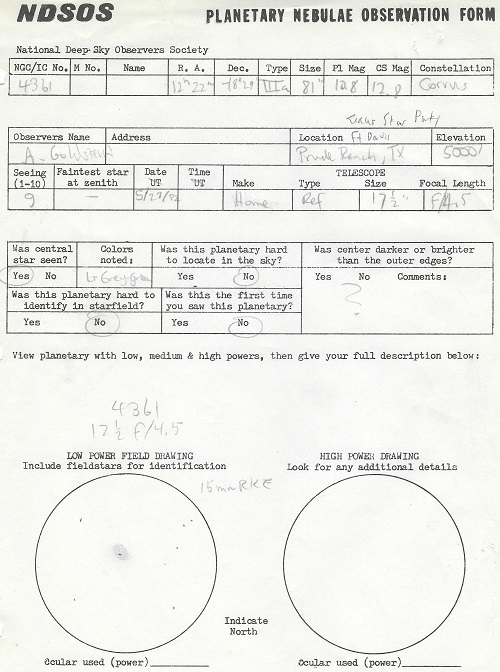
Lemon Slice Nebula – IC3568
A nebula at a high declination, the name is associated with a photo taken by the Hubble Telescope with a filter. No nebula has a yellow color in a telescope.

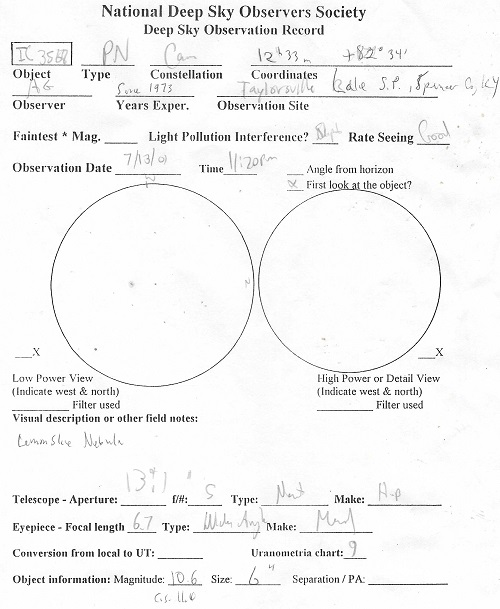
NGC6058
A nice planetary nebula in Scorpius.
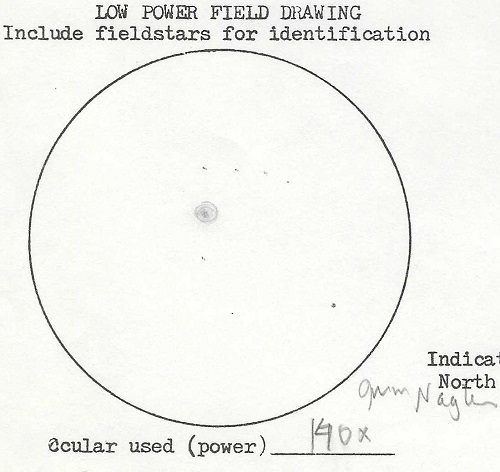
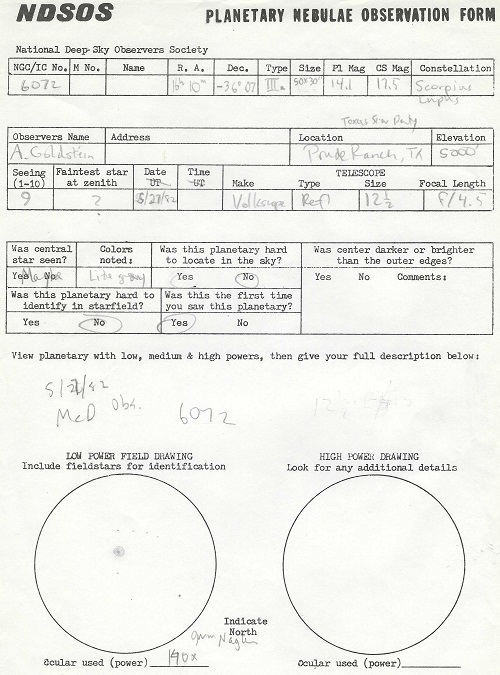
NGC6802
This is a bipolar nebula in Scorpius. It has a very distinctive oval shape.
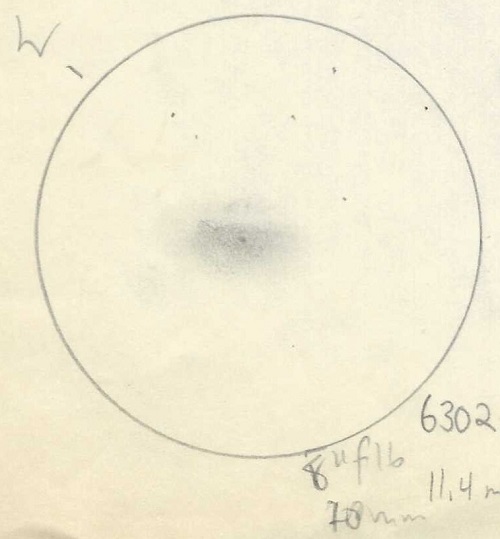
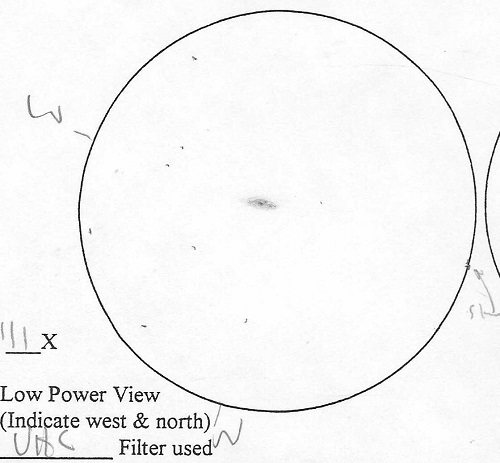

Ring Nebula – M57
One of the most famous planetary nebulae in the whole sky, Messier 57 (M57) is called the Ring Nebula because of its classic ring-shape. It is the archetype ring shaped planetary nebula. Located in Lyra, it passes overhead in in late summer evenings from mid-latitudes in the northern hemisphere. That makes it convenient for early observing in the summer & autumn evening sky and can be seen in the morning sky most other seasons.
This was my first deep sky object. I saw it through a 20″ telescope owned by the Louisville Astronomical Society at their Star Lane location in 1968. My young eyes found it to be vivid green. In later years with the same telescope, the green was less vivid. It can be seen in small telescopes or large binoculars because it is 8.8 magnitude and 71″ wide. Also called NGC 6720, this object has a 15.3 magnitude central star. Another challenge is the barred spiral galaxy IC 1296 nearby. It is challenging because it is close to face-on giving it a low surface brightness. Coordinates: 18h 53.6m +33o 02′
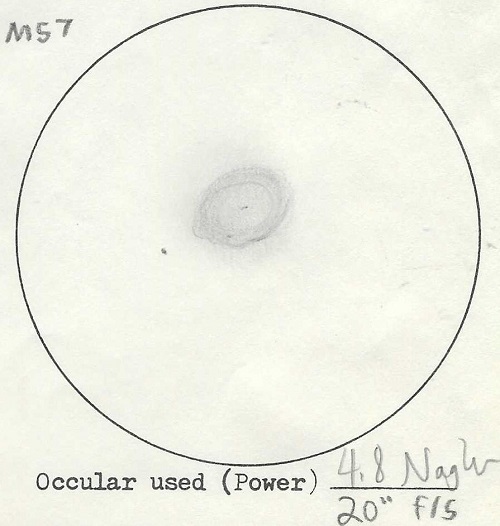
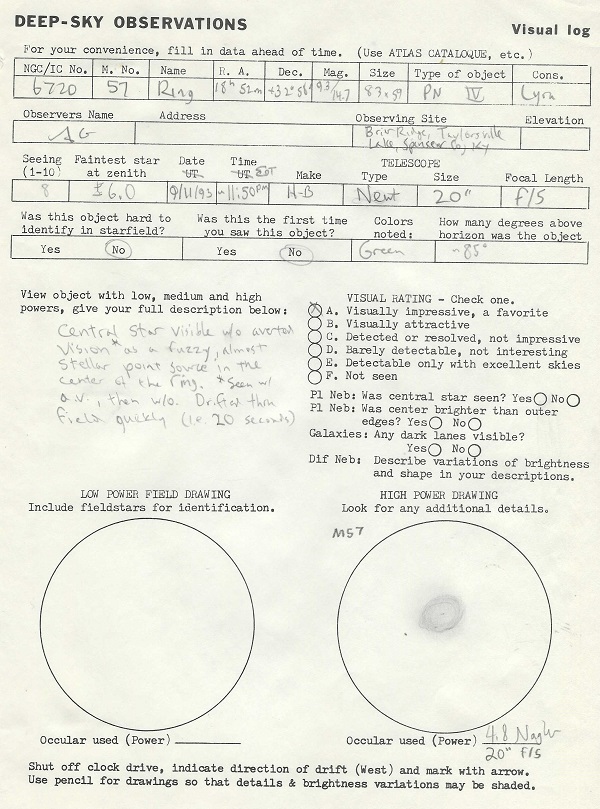
Dumbbell Nebula – M27 – NGC 6853
Located in the small constellation of Vulpecula, it is one of the largest and brightest planetary nebulae in the sky. I observed it with binoculars, spotting scopes, and telescopes of all sizes over the years. It is easy to find using the diagonal stars of the constellation of Sagitta (the arrow) to point the way.
This shell of ionized gas is gas lies 1,000 light years away. As a result of proximity, the 13.8 magnitude central star is visible in 6 to 8-inch scopes under dark skies. Numerous other stars appear superimposed on the nebula.
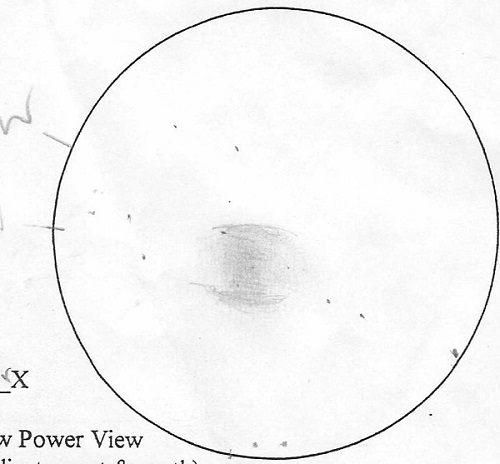

Minkowski 1-42 Eye of Sauron
This is a small, faint planetary in Sagittarius. I observed it with Will Olliges’ 25″ telescope August 20, 2023. It is small – 8″ diameter – and faint at 13.4 magnitude. It’s estimated to be 10,000 light years away which puts it in the spiral arm closer to the central hub than the sun. This is a challenging object for mid-latitude N observers lying in southern skies. A large scope (it can be 12″) and light pollution-free skies are essential. Coordinates: 18h 11.1m -28o 59′
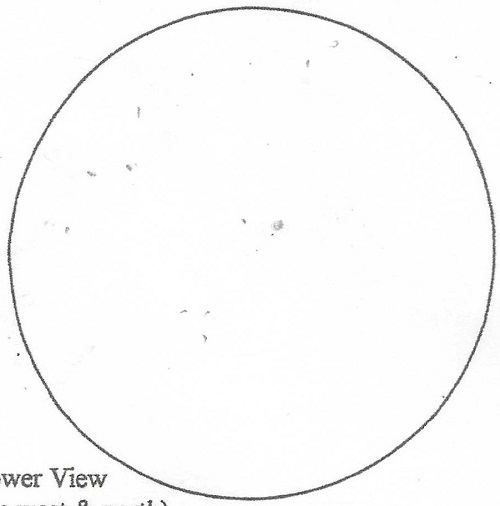

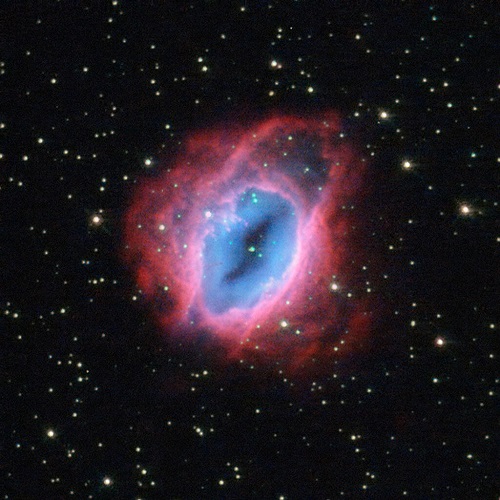
NGC 6905 in Delphinus
Sometimes called the Blue Flash Nebula, this 11th magnitude, 40″ diameter cloud is an easy object but overshadowed by the Ring and Dumbbell Nebulae found in the same region of the sky. Coordinates: 20h 22.4 m +20o 07′
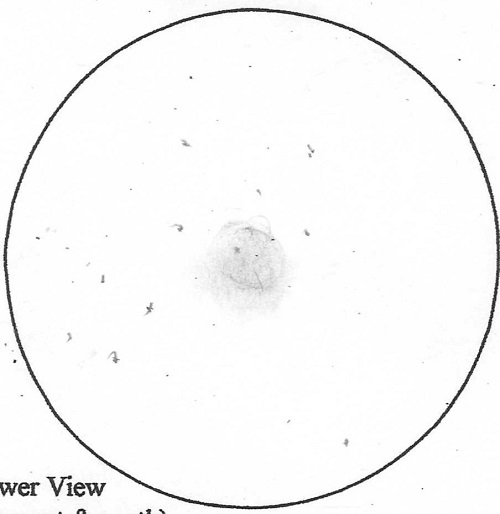

Abell 70 and PMN J2033-0656
Abell 70 – A very faint (14.5 mag.) ring-shaped planetary nebula in Aquila. I observed it with Will Olliges 25″ f/5 Obsession telescope at Briar Ridge in Spencer Co., KY in August. The nebula distance estimate is between 13,500 and 17,500 light years. What makes it unique is the edge-on lenticular galaxy PMN J2033-0565, hundreds of millions of light years behind it lies on the edge like a hat. With my left eye (artificial lens) the galaxy is easier to see than with my natural lens. Granted, it has a slight cataract, but I can observe away from my central vision (called averted vision). With an O-III filter, the nebula is easier to see (no surprise) and the galaxy vanishes (no surprise). The nebula is 42″ wide. A good finder chart can be found at Abell 70 with Galaxy PMN J2033-0656 | Deep⋆Sky Corner (deepskycorner.ch) (Viable link 12-28-2023.) Coordinates: 20h 31.5m -7o 05′
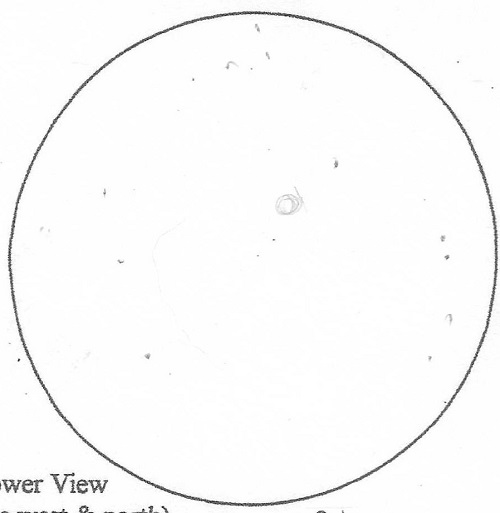
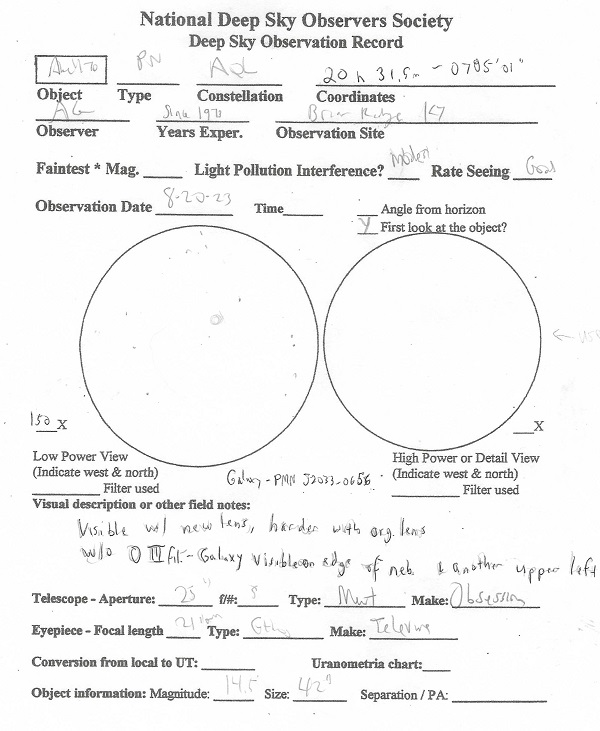
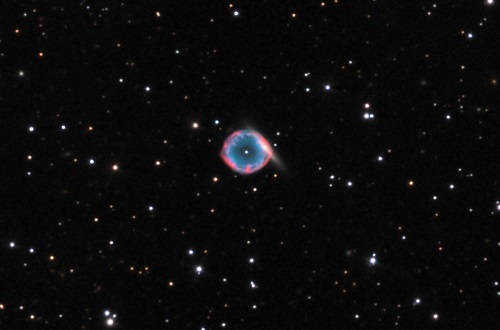
Image source: Abell 70 | SkyCenter (arizona.edu) (Viable link 12-28-23)
NGC 7008 – Fetus Nebula
I suppose the moniker is from the curved patch within the shell of this dying solar-type star. It’s fairly close at 2,800 light years and is large – 83″ across. At 10.9 magnitude is can be picked up with smaller telescope – 4 to 6-inch – under excellent skies. An Alberio mimic double star (blue and yellow) is located near the nebula’s edge. Coordinates: 21h 0.5m +54o 32.5′
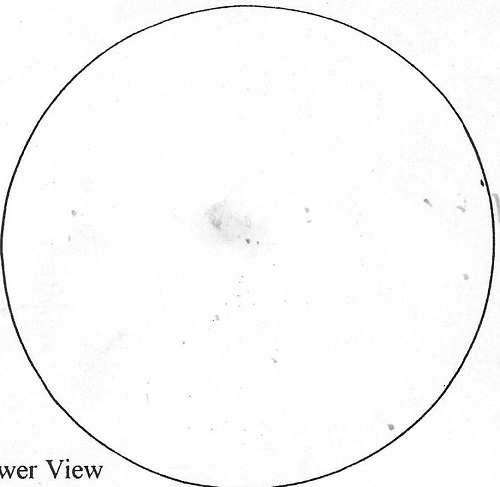


Photo from the Hubble Telescope. https://apod.nasa.gov/apod/ap080825.html (Viable 12-31-23)
NGC 7026
It’s unusual for Dreyer’s New Galactic Catalog (NGC) to have two bright planetary nebulae in sequential order. But this is the case for NGC 7026 and NGC 7027 (described below) in Cygnus. This elongate 25″ x 5″ shell of gas from a dying star is located 6,000 light years away. It’s an easy object for moderate telescopes at 12.7 magnitude. I’ve seen it called the Cheeseburger Nebula, although unlike Gomez’s Hamburger, I don’t see the resemblance. It has two bright patches on each side of the minor axis in this sketch with a C-11 telescope at the Jubilee Observatory in Peoria, Illinois. The 14.8 magnitude central star requires a large scope and high magnification. Coordinates: 21h 4m +47o 39′
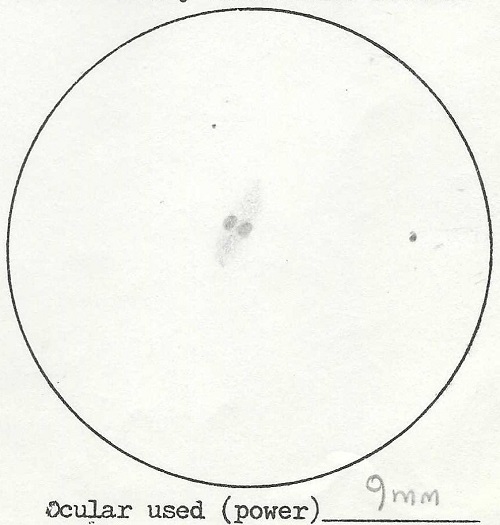


Link to image: https://esahubble.org/images/potw1222a/ (Viable 12-31-23)
NGC 7027 – Box Nebula
A planetary nebula forms from dying solar-type stars. The Sun will become one in about five billion years. The outburst that creates a planetary nebula only lasts a few thousand years. You’d think it would be rare to see something like that. But there are billions of sun-like stars of all ages in the Milky Way, and more than a thousand of planetary nebulae are known. Most a far away and very small. This nebula is fairly close at 3,000 light years.
NGC 7027 is an example of a new-born nebula. The shell being thrown off still shrouds the central star, making it virtually invisible through a telescope because the star is faint and the nebula is bright. The ionized gas is dense and fluoresces brightly at 8.5 magnitude, so it can be seen in small telescopes. It is a compact 15″ in diameter with a decidedly square shape. With low power and a small telescope, it may be seen as a blue to green “star.” With 8″ to 12″ telescopes the shape and color are pronounced. It bears magnification well.
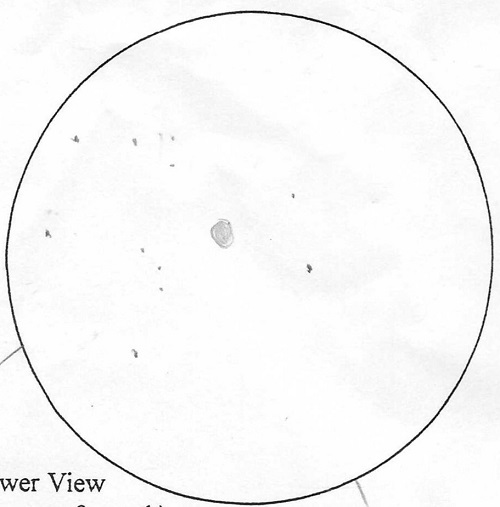
My early observations with a 20″ scope presented a vivid color. My most recent observation in a 25″ noted the nebula to be green with my artificial lens and blue with my natural one. Why? I have no idea! Coordinates: 21h 7.1m +47o 51′
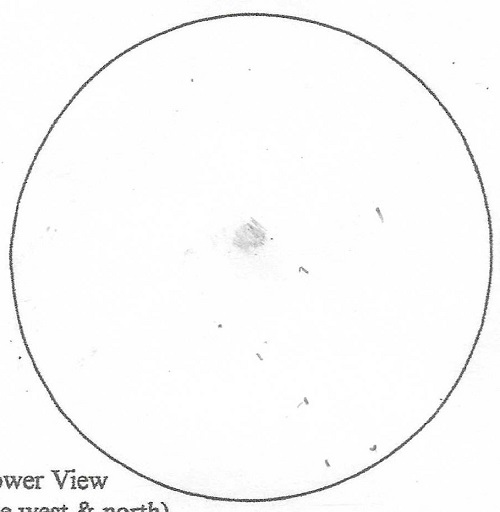
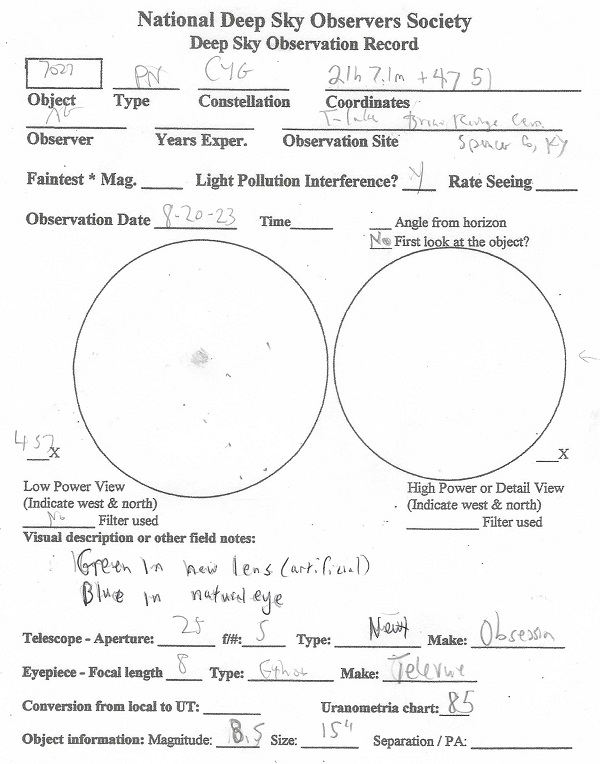
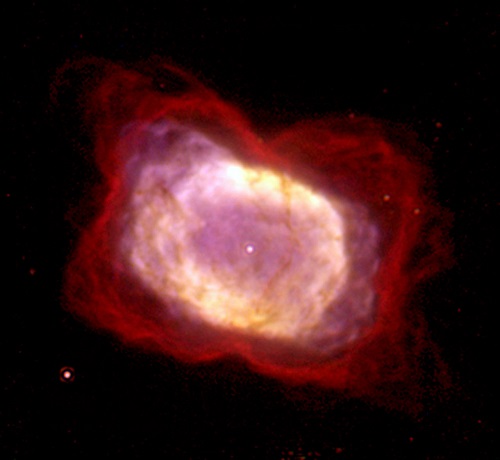
Image source: Planetary Nebula NGC 7027 | ESA/Hubble (esahubble.org) (Viable link 12-28-23)
NGC 7048
This large disk-shaped planetary also lies in Cygnus, at a distance of about 5,800 light years, which means the light we see has been traveling since the beginning of the 4th millennium BCE. It’s a good size planetary, about one arc minute (60 arc seconds) in diameter. The 12.1 magnitude disk is brighter on one side. The central star is too faint except for perhaps the with apertures than can pick up 18th magnitude stars. Coordinates: 21h 14m +46o 17′
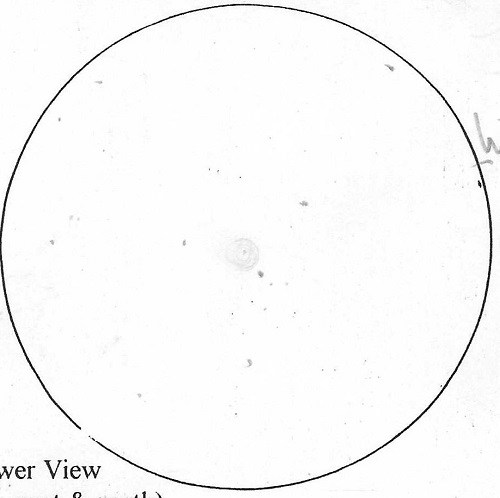
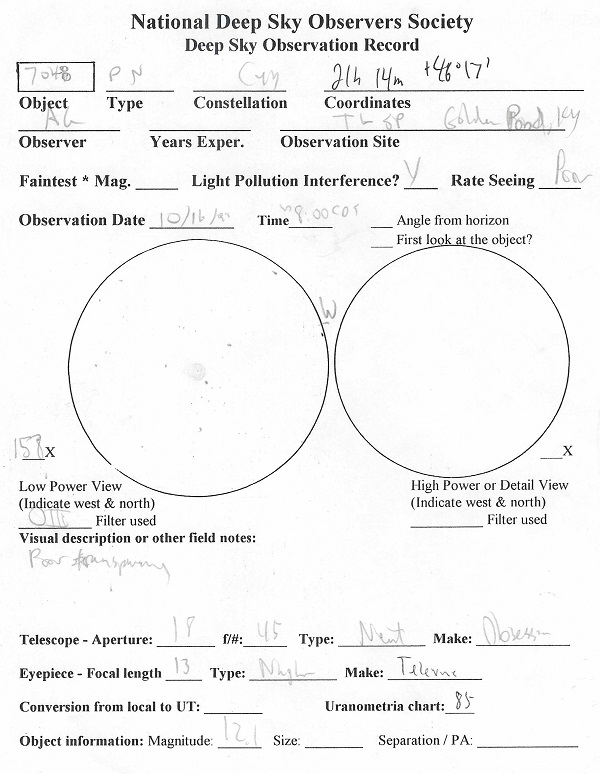
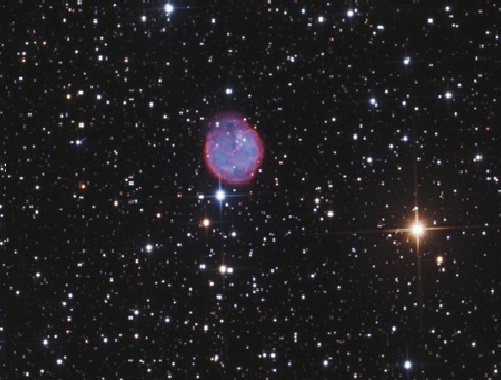
Link to NGC 7048 image http://www.capella-observatory.com/ImageHTMLs/PNs/NGC7048.htm (Viable 12-31-23)
Minkowski 1 – 79 (PK 93 – 2.1)
Another challenging planetary nebula is M 1-79 in Cygnus lying at roughly 6500 light years from us. It’s pretty faint at 13.2 magnitude, and 32″ in diameter. There are stars superimposed on the nebula because it is in a rich part of the Milky Way. The central star is about 19th magnitude. It can be found one degree northeast of the open cluster M39.

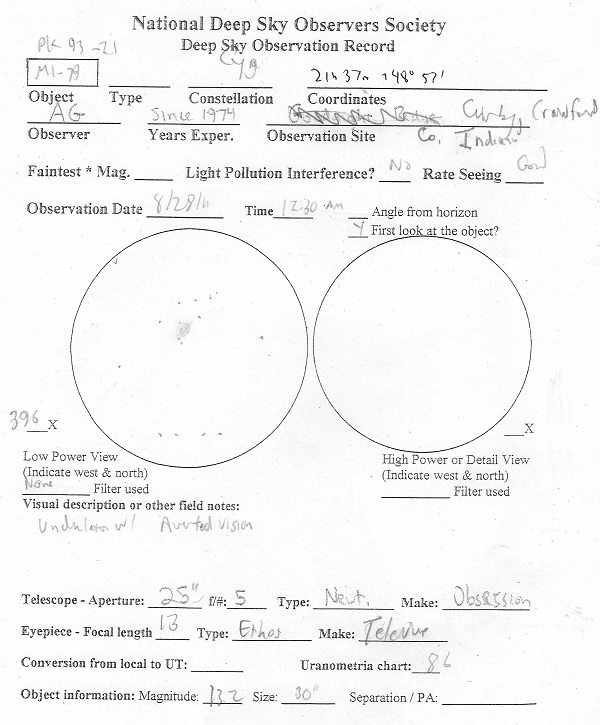
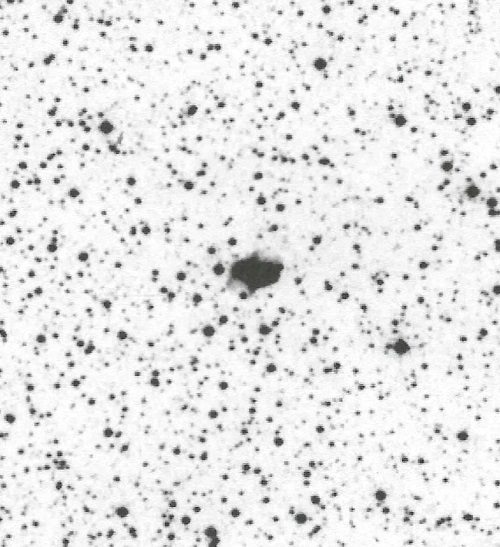
Additional nebulae to be described:
Blinking Planetary Nebula – NGC6826
Named because it seems to blink on and off when you look at it. Green color. Located in Cygnus.
Eskimo Nebula – NGC2392
In Gemini; has a “face” surrounded by a “parka.”
Helix Nebula -NGC7293
In Aquarius; the largest bright planetary in the sky. It has a low surface brightness and needs dark skies. It’s bright enough for binoculars in rural skies. No color can be seen visually – just in photos.
Saturn Nebula – NGC7009
Also in Aquarium, looks nothing like the Helix. It has an oval disk with symmetrical projections (ansae). Bright green.
Owl Nebula – M97
In Ursa Major is easy to find near Beta Ursa Majoris in the Big Dipper. It’s circular with two dark spots forming the eyes of the owl.
